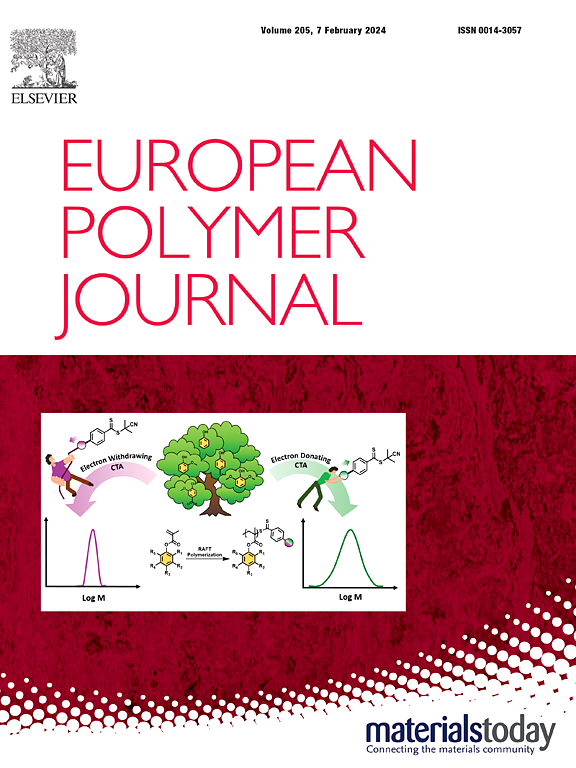Microscopic studies on remarkable rheological behavior of single-chain nanoparticles and linear polymer blends
IF 5.8
2区 化学
Q1 POLYMER SCIENCE
引用次数: 0
Abstract
The incorporation of nanoparticles into linear polymers can significantly alter the rheological properties of the system. Nevertheless, the fundamental mechanisms behind this phenomenon have remained elusive. In present study, the changes in the microstructure, particularly the mesh size (ξ) and relaxation time (τd) of entangled chains, in a fully polymer/single chain nanoparticles (SCNPs) nanocomposite (PNC) composed of linear polymethyl methacrylate (PMMA) chains and PMMA SCNPs was investigated by microrheological techniques. This research aims to elucidate the mechanism by which soft nanofillers affects the macroscopic properties of SCNP and linear polymer composite systems from a microstructural perspective. Results reveal that SCNPs demonstrate rapid chain segment relaxation and exhibit low viscosity in solution due to three-dimensional spherical structure. More importantly, the addition of SCNPs to the linear matrix significantly modifies the entanglement behavior of the linear polymer, decreasing the entanglement density (lager mesh size), resulting in a lower viscosity, and quicker relaxation times for the system. Additionally, it is observed that the dispersed nature and high penetrability of SCNPs lead to increased disorder in their conformation in solution as their size grows, which gradually diminishes their impact on the entanglement behavior of the system’s chains. Consequently, the effect of SCNPs on the rheological behavior of the system shows a strong dependence on size.

求助全文
约1分钟内获得全文
求助全文
来源期刊

European Polymer Journal
化学-高分子科学
CiteScore
9.90
自引率
10.00%
发文量
691
审稿时长
23 days
期刊介绍:
European Polymer Journal is dedicated to publishing work on fundamental and applied polymer chemistry and macromolecular materials. The journal covers all aspects of polymer synthesis, including polymerization mechanisms and chemical functional transformations, with a focus on novel polymers and the relationships between molecular structure and polymer properties. In addition, we welcome submissions on bio-based or renewable polymers, stimuli-responsive systems and polymer bio-hybrids. European Polymer Journal also publishes research on the biomedical application of polymers, including drug delivery and regenerative medicine. The main scope is covered but not limited to the following core research areas:
Polymer synthesis and functionalization
• Novel synthetic routes for polymerization, functional modification, controlled/living polymerization and precision polymers.
Stimuli-responsive polymers
• Including shape memory and self-healing polymers.
Supramolecular polymers and self-assembly
• Molecular recognition and higher order polymer structures.
Renewable and sustainable polymers
• Bio-based, biodegradable and anti-microbial polymers and polymeric bio-nanocomposites.
Polymers at interfaces and surfaces
• Chemistry and engineering of surfaces with biological relevance, including patterning, antifouling polymers and polymers for membrane applications.
Biomedical applications and nanomedicine
• Polymers for regenerative medicine, drug delivery molecular release and gene therapy
The scope of European Polymer Journal no longer includes Polymer Physics.
文献相关原料
公司名称
产品信息
阿拉丁
methanol
阿拉丁
dichloromethane (CH2Cl2)
阿拉丁
tetrahydrofuran (THF)
 求助内容:
求助内容: 应助结果提醒方式:
应助结果提醒方式:


